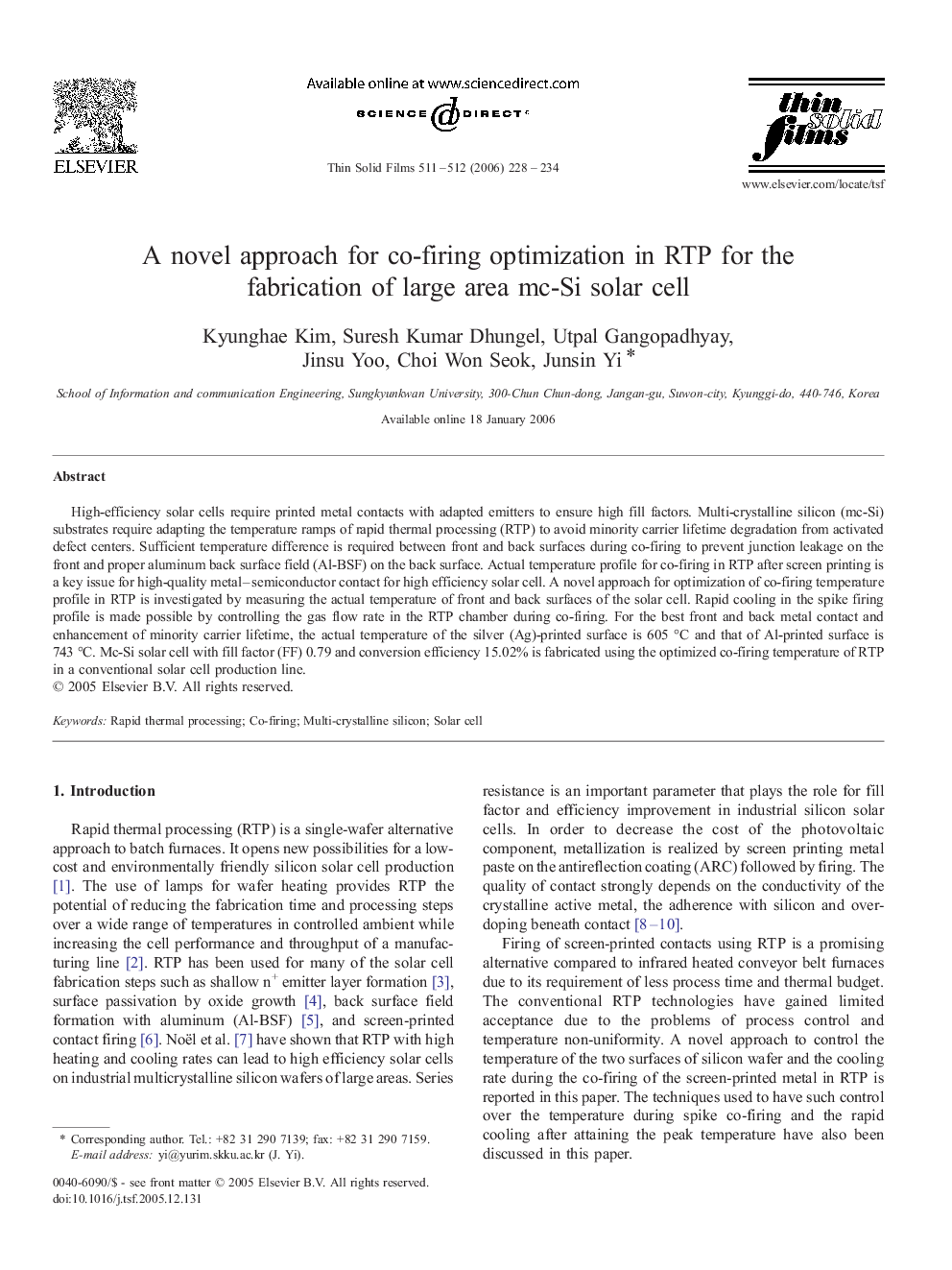| Article ID | Journal | Published Year | Pages | File Type |
|---|---|---|---|---|
| 1673310 | Thin Solid Films | 2006 | 7 Pages |
High-efficiency solar cells require printed metal contacts with adapted emitters to ensure high fill factors. Multi-crystalline silicon (mc-Si) substrates require adapting the temperature ramps of rapid thermal processing (RTP) to avoid minority carrier lifetime degradation from activated defect centers. Sufficient temperature difference is required between front and back surfaces during co-firing to prevent junction leakage on the front and proper aluminum back surface field (Al-BSF) on the back surface. Actual temperature profile for co-firing in RTP after screen printing is a key issue for high-quality metal–semiconductor contact for high efficiency solar cell. A novel approach for optimization of co-firing temperature profile in RTP is investigated by measuring the actual temperature of front and back surfaces of the solar cell. Rapid cooling in the spike firing profile is made possible by controlling the gas flow rate in the RTP chamber during co-firing. For the best front and back metal contact and enhancement of minority carrier lifetime, the actual temperature of the silver (Ag)-printed surface is 605 °C and that of Al-printed surface is 743 °C. Mc-Si solar cell with fill factor (FF) 0.79 and conversion efficiency 15.02% is fabricated using the optimized co-firing temperature of RTP in a conventional solar cell production line.
